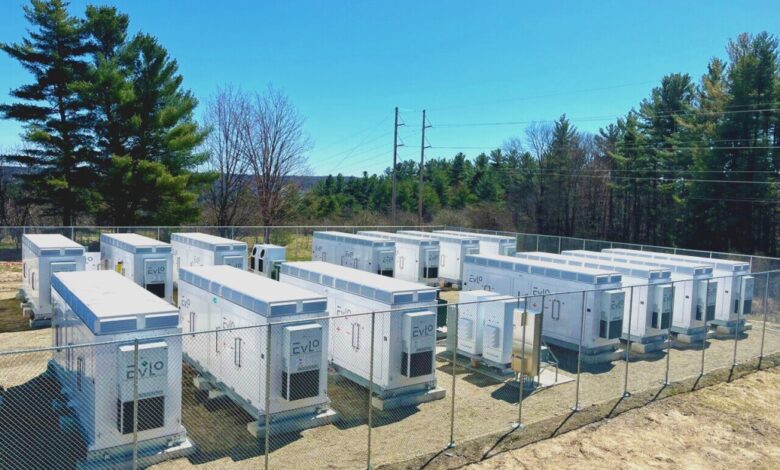Belsito: Expect rate increases with state’s new energy law

The new Massachusetts clean energy law that focuses on streamlining the permitting process for massive amounts of new clean energy projects, transmission, and battery storage passed rather quietly during a rare lame duck session, considering the massive reach in implications it will have on Massachusetts residents and their wallets. Among other concerns, the law mandates the rapid purchase of tens of billions of dollars worth of huge grid scale batteries. We discuss the basics of this part of the law at: massfiscal.org/op-ed-the-actual-costs-legislature-climate-bill.
This is sure to be a very complex process with little guidance from the new law. The big question we have is who will wind up paying for something we previously found won’t give us much bang for our buck, where many billions of dollars will buy you a few more hours of energy at best. Big rate increases are certain but it’s unclear which ratepayers will be taking the hit and how these price increases will be distributed among them.
We considered what the process will look like in the near term. There is a great rush because the new law mandates that 1,500 megawatts (MW) of batteries must be bought by next July, which is very soon for such a complex procurement. This is around a thousand tractor trailer-sized batteries that will have to end up in someone’s community, and that could cost well over $3B which will have to come from somewhere.
One point to be considered is that the law says this huge battery storage buy shall be made jointly by “every distribution company” in the State. The law is unclear on whether this includes municipal power authorities, which are not technically companies. If it does exclude them, then municipal power customers might be off the hook when it comes to paying the billions.
Assuming it is just the investor-owned utilities that most of us use, the big question is then how will the cost be divided among them? The new law is silent here. They might do it on the basis of customer equity, such as total retail sales. Or they might do it on the basis of their relative need for batteries in which case customers of one utility could see much bigger rate increases than another utility’s customers.
Another complexity is that these rate increases all have to be applied for and approved by the state Department of Public Utilities. This can be a long-drawn-out process but the bill itself puts the state under a significant deadline. Rushing to spend billions is never good policy, but it is now the law that our elected state representatives and governor approved just a week after most of them secured reelection, while the senate gave its approval days before. Presumably while the purchase process is done jointly the rate increases will be done on individual utility cases, especially if the rate increases differ a lot.
There is also a chicken and egg dilemma. The rate increases should be based on the battery costs, but the utilities cannot finalize the purchases to establish costs without the rate increases. Perhaps they will make the purchase contracts contingent upon getting the necessary rate increases. Among the uncertainty, the one thing that can be assured is that your bills will go up.
There are other large costs that will also be covered by the looming rate increases. These include acquiring the sites and building the facilities to house the thousand huge batteries, plus new transmission lines and other grid upgrades. They also include operating and maintaining these facilities, as well as profit. Perhaps the biggest additional cost that ratepayers will end up paying is the interest cost of financing all these other costs. The total of all these costs is referred to as the revenue requirement, which the rate increases have to cover.
Another issue is the large federal tax breaks that come with this sort of grid battery purchase. These are typically investment tax credits. The question is who will get the benefit of the credits, the utilities or the ratepayers? It can be done either way and the new law seems silent on this big money issue.
Another wrinkle is that some of the tax credits are contingent on the location of the batteries, which is unlikely to be fully known by next July. There are bonus credits for locating the facilities in disadvantaged communities. So until the facility sites are known and approved the total revenue requirements of this multi-billion dollar battery project might be unknowable.
As if all this complexity were not bad enough there are two more huge battery buys mandated in the near future. These are 1,000 MW each by July 2026 and 2027. The revenue requirements for purchasing this 3,500 MW of total combined storage capacity may be well over $10B in less than three years. Time will tell.
These staggering costs and who will pay them will start to come into focus with the rate increase applications that the power companies will have to file. The affected ratepayers should demand an explanation as there is no apparent use for all these thousands of extremely large, expensive and dangerous batteries that will be dotting the landscape in our communities.
Laurie Belsito is the policy director at Massachusetts Fiscal Alliance




